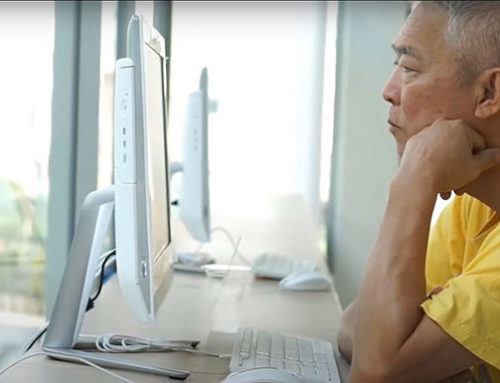In the 80’s I remember media reports about high call volume on Mother’s Day and having the experience of picking up the phone (yes, a land line), dialing my Mom and promptly getting the “I’m sorry all circuits are busy now” recorded message.
For those of us living a distance from our moms, the telephone was the most interactive way to connect. Sure we sent cards too, but who else in the world wants to hear your voice, and if possible, look into your lovely face more than Mom? New technology and devices have provided new channels for all of us to reach out to Mom and it seems that we are doing so–and not just on Mother’s Day.
Some 2006 data by the Pew Internet and American Life study showed that children weren’t calling on Mother’s Day was declining because with more communication channels they were talking to Mom more! Facetime, Skype and other videocalling programs are providing an even richer experience when Mom lives apart from her children. I have had recent conversations with three women over age 60 for whom these channels have become a wonderful means of interacting with and watching grandchildren and great grandchildren change and grow.
Mature adults may not text in ubiquity like some younger generations but they are adopting the communication form more and more. It is no substitute for the sound of your voice or the gleam in your eye, but sending images that you know would make Mom smile provides another way to connect if Mom is a texter. As people 50+ adopt new social and mobile forms of communication their children and grandchildren sometimes choose to move on to other channels to avoid interaction.
 |
| Blogger Amy (right) with (from left) her mom Bonnie, grandmother Jean, and daughter Amanda |
Sherry Turkle’s book Alone Together chronicles some of the woes of older children who regret showing Mom how to text or Facebook. As with most mothering tasks, staying connected is a delicate balancing act. Turns out new research by Catherine Steiner-Adair says moms my age (you’ll have to guess) and younger don’t have that balancing act perfected according to their children. Steiner-Adair’s new book The Big Disconnect reports that children ages 8 to 24 are eager to be seen and heard by Mom–whose attention is now often co-opted by the device in her hands. The place I see this phenomena most dramatically played out is on the playground. When my children frequented playgrounds I definitely took full advantage of some ‘me’ time as I sat on a park bench and observed the children and had some time to think my own thoughts. But my peers and I were present and at least appearing to pay attention as the children did what children do at playgrounds–shout out “Mom! Mom! Look at me!” So eager to show us their latest trick.
In the last three years my trips to playgrounds have become less frequent but when I visit one I find it is commonplace for moms to be sitting on the park bench completely engaged in surfing or texting while impatiently and half heartedly responding to their children’s increasing pleas to “Look at me!”
This Mother’s Day it is my hope for all mothers and children to give each other the gift of real attention–after all, it seems as though connecting with others drives many of us to be so hungrily drawn to these devices. Perhaps the gift of genuine connection can help fill some of our longing.
Happy Mother’s Day to one and all, but most especially, my awesome Mom, Bonnie!





